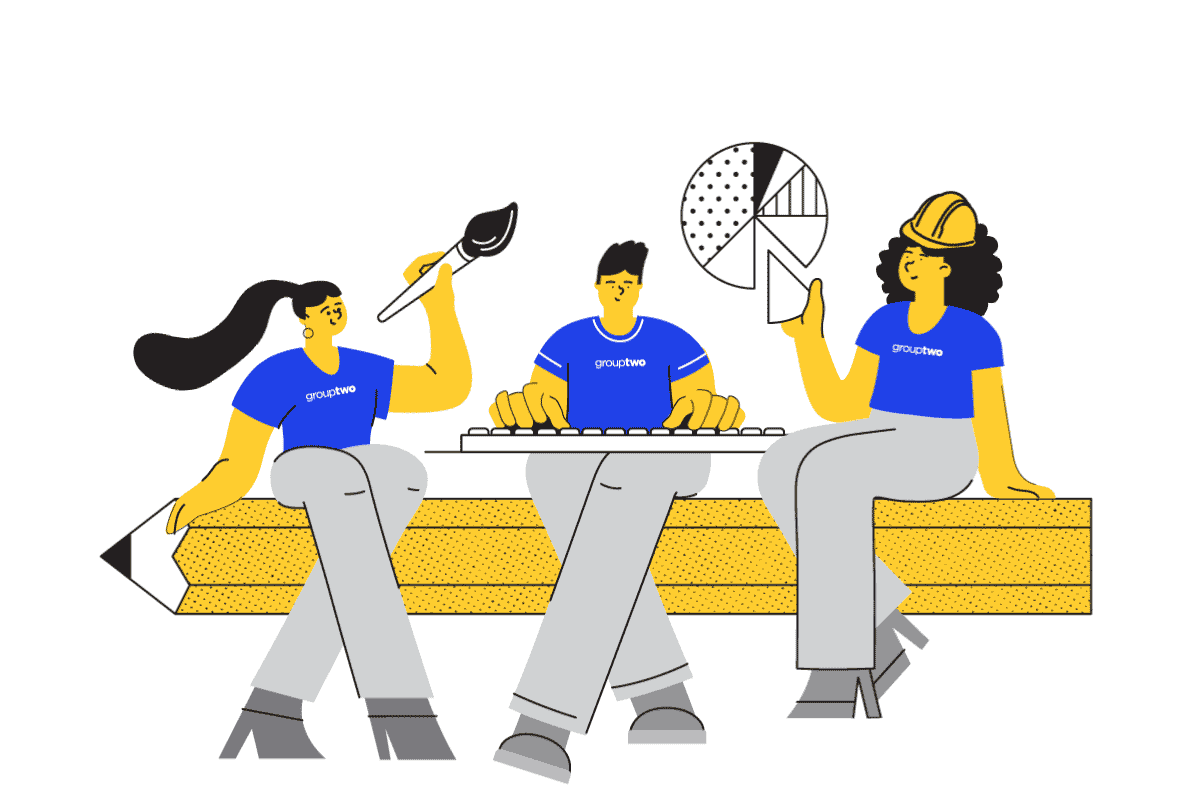Welcome to 2022! We know… it’s only November, but your budget planning for the new year should be well under way. As we think about how next year will be different from this one, how markets will continue to normalize, and how home buyers consume information and make buying decisions today, we’ll need to make sure we’re focused on the right initiatives to stay ahead of the curve. Inevitably, we’ll need to adjust not only our budgets, but also the types of strategies we implement in the new year and beyond.
With the decline of third-party data, which organizations have relied on so heavily to reach their audiences, we must now prioritize first-party data — how to acquire it and what to do with it once it’s ours. This is the goal that the majority of our marketing efforts should support in 2022.
While the overall allocation of resources hasn’t changed much year-to-year, it’s where we focus within the larger budget categories that will make a difference next year. As a general reminder, you should be spending 1-1.5% of your top-line revenue on marketing efforts. This includes:
- 50-60% Digital Marketing (includes SEO, SEM, social media, Zillow, content website, etc.)
- 15-20% Signage/Sales Offices
- 5% Print/Collateral
- 3-5% Events
- 1% Innovation
(For more home builder budget basics, check out last year’s blog post.)
Nearly 80% of the traffic that comes to a builder’s website originates from three main sources: organic content (SEO), paid search search (SEM), and social media.Your marketing budget should be weighted accordingly. Today, let’s focus on how we should prioritize that largest bucket of Digital Marketing moving forward.
Digital Content for Home Builders
Content marketing has long been a strategy of successful businesses across industries. In 2020, 70% of marketers invested in content marketing (Hubspot), and two thirds of marketers expect their content marketing budgets to increase next year (Content Marketing Institute).
A strategic approach to digital content creation can lead to increased organic traffic, but it also contributes to a solid reputation in your market and being seen as a valuable resource to your consumers. In 2022, it’s time to recognize that Content is King!
Digital content is any form of video, photography, renderings, interactive content, audio, live broadcasts, and copy that your audience consumes which educates, informs, or entertains them. While 2020 and 2021 took home builders on a wild ride of unpredictability and unprecedented success, these were also the years we should have been building up our content libraries for when the market shifted. The market is shifting.
Content Maintenance vs. Content Catch-Up
When it comes to creating these important forms of content that your audience will use to find you organically on the web and learn more about your products, there are two buckets of builders: those in Content Maintenance Mode, and those in Content Catch-Up Mode.
If you are in Content Maintenance Mode, you used the past year and nine months to sharpen your brand and messaging and build your content libraries. Now that the market is stabilizing, interest rates are rising, and traffic is slowly returning to pre-pandemic numbers, you are ready to blast your message to the world. You’ve created enough content that you now don’t have to spend the time or resources creating it; instead you’re focused on sharing, promoting, repurposing, and refreshing it. Your 50-60% Digital Marketing budget allocation in 2022 will be more heavily weighted to getting the message out (SEM, PPC, social media) now that you have a website loaded with interesting, useful content that converts.
If you are in Content Catch-Up Mode, you may have barely been able to keep up with the frenzied sales activity of the last nearly two years, finding it difficult to strategize and plan for when the market would shift. Now, you are finding that your content (and possibly your website) is behind the curve. Sure, you can run ads, but what is keeping users engaged on your site once they get there? If you are in this bucket, you’ll need to spend more of that 50-60% Digital Marketing budget on content creation, and possibly even increase your overall marketing budget to 1.5-2% of top-line revenue.
How to Prioritize Digital Content
We know… content in general can seem overwhelming to tackle. There are so many priorities and frankly, expectations from today’s buyers. We’ve got you. As a baseline, builders should start with content that educates and informs, before moving on to the more entertaining variety that may be quick to produce, but doesn’t have a long shelf life. Here are the content basics that home builders should master first:
1) Proper Website Architecture
If someone is searching for homes in your market, they will hopefully land on your ad or one of your high-ranking blog posts. Once they enter your website, it should be easy for them to find the information that’s most important to them, and for navigation to lead them along the buyer’s journey to the point of conversion. Start with a website analysis to see if users are navigating your site effectively, or if they are clicking off too soon.
2) Website Content
What’s the next best thing to seeing a new home in person? Experiencing it on your website! Make sure your site is full of professional photo and video galleries, model home photography, interactive floor plans, tours and site maps, and compelling, long-form, SEO-rich copy.
3) SEO
This is an area where builders should invest more in 2022 than they have in any other year. SEO is how your audience finds you organically on the web if they are searching using keywords and search terms, and should be a combination of on-page, technical SEO and SEO-driven blog content. Remember, third-party data is gradually disappearing; SEO is how you will attract users to your site so that you can gather their all-important, first-party data.
The algorithms change monthly, but a solid digital content strategy always performs. With major ad platforms like Facebook and Google becoming less reliable every day, we have to look around the corner at all our options to get more high-quality, digital traffic in the door. In 2022, let’s make sure we devote enough time and resources to creating engaging digital content that will attract new customers and enhance their searching and buying experiences.

